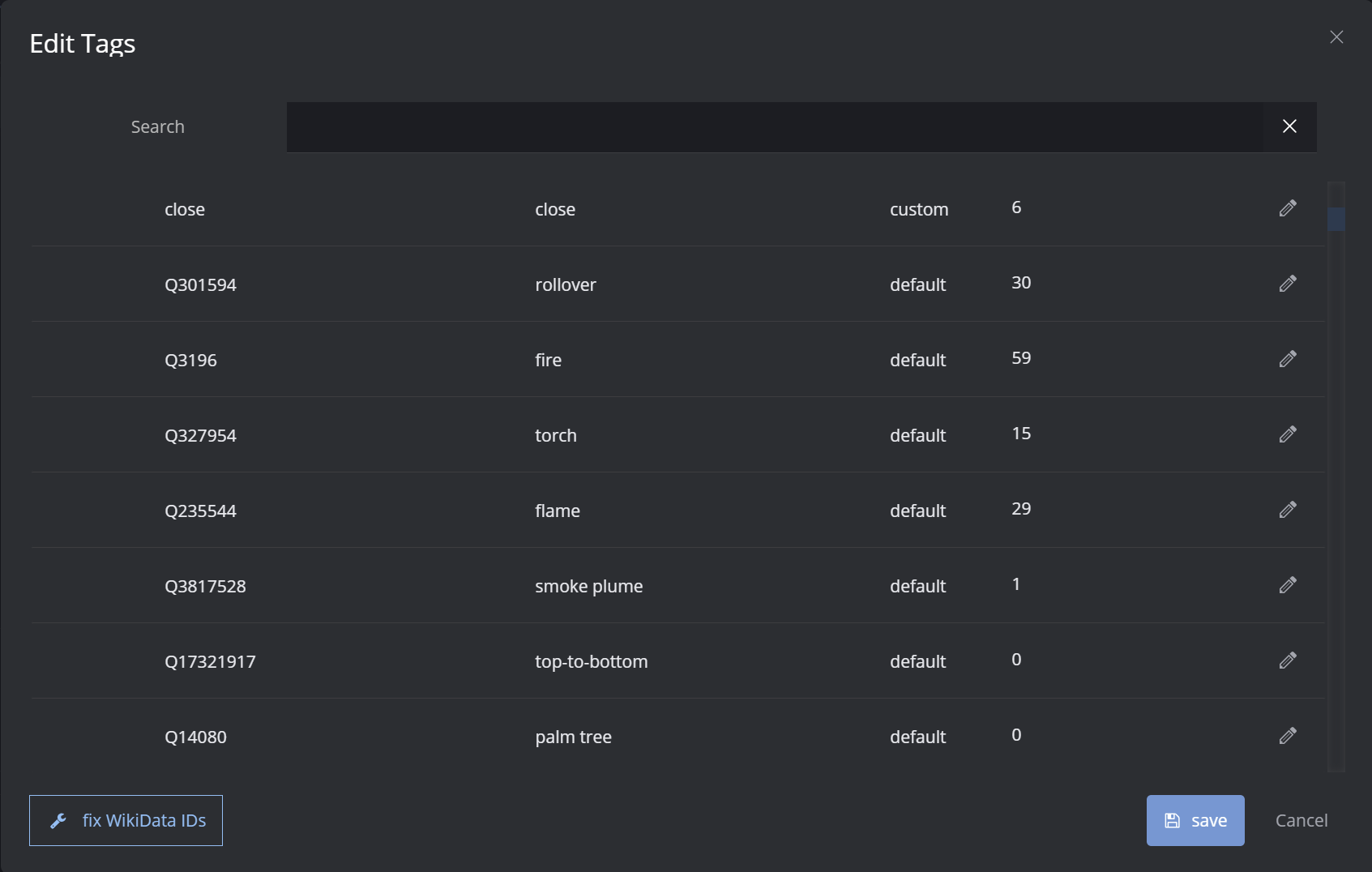Tags & Categories
The processes in each VFX studio are somehow similar. The reason why we want to differentiate between all these categories, tags and synonyms is that we don’t have to reinvent the wheel over and over each time a studio wants to improve their asset management. Moreover, by using predefined terms we can avoid duplicated tags and spelling mistakes to keep your systems and database clean. There is no reason for two tags to exist if they both describe the same thing. Just think about singular or plural terms (fire & fires). They are the same thing, that’s why we can get rid of unnecessary duplications.
Categories
Categories are fixed classes that are persistent and will not change. A category is a class or division of things regarded as having particular shared characteristics like fire, smoke or debris.
The categories displayed in the gallery and ingest view are defined by the category hierarchy tree for each library. A global hierarchy tree can be used to use the same categories for all libraries. It’s also possible to define custom hierarchy trees for different libraries. Learn more about category hierarchy tree.


Create hierarchy tree overwrites in the library settings
Tags
You can use as many tags as you like to describe an asset. The tag (sometimes also called label) is attached to someone or something for the purpose of identification or to give other information. They can be considered dispensable, meaning “the more the better” in order to describe an asset as detailed as possible. Tags can tell you what you see, like smoke and fire, but can also be more descriptive like the quantity or the direction and speed (“fast at camera”).
Tags for each library are stored in the database. To modify the tags for a library, use the Edit Tag dialog.

Settings -> Library -> edit tags

Synonyms

The beauty of the VFX industry is that we come together from all over the world. Evolving on this union we want to find a common dictionary that unites all our languages and preferences. The software leverages descriptions and synonyms for each category from a public domain source.
Default Tags & Categories
When creating a new library, default tags and categories are automatically generated. If you uncheck the create default tags & categories option, no tags or categories will be created in the database, allowing you to start with a clean setup.

